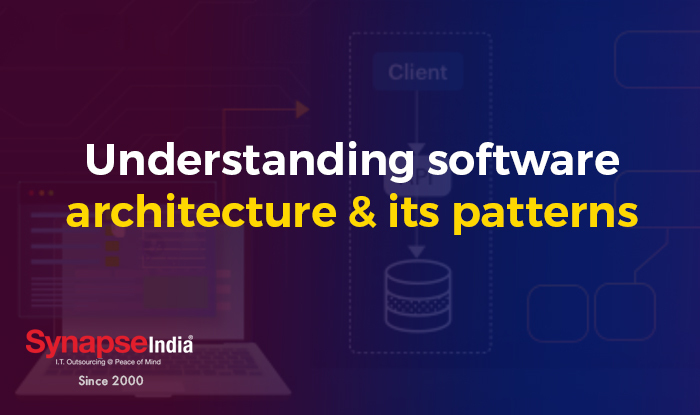 04 May 2022
04 May 2022
Software architecture is a design that provides a glimpse of all the steps involved in building a software. It reveals the complete structure of the software,assembly of components in it, and what process they’ll follow to interact with one another while hiding the implementation.
This whole process helps the software development team to understand the requirements of the customers and clearly communicate how the software is going to be built.
Creating a software architecture is a process of selecting, tailoring, and combining patterns. A software architect should know how to instantiate a pattern, how to make it apt according to the specific context and the constraints of the problem.
The microkernel architectural pattern is also known as a plug-in architectural pattern. This pattern is most commonly used at a time when software teams develop systems with interchangeable components.
Microkernel pattern is being implemented on software systems that are capable enough to adapt to the changing system needs. It distinguishes a minimal functional core from extended functionality and customer-specific parts. It also works as a socket for plugging in these extensions and coordinating their collaboration.
This pattern is the perfect example of a natural paradigm used for executing product-based applications. And a product-based application is one that is packaged and made available for download in versions as a typical third-party product.
Through the microkernel architecture pattern you can add extra application attributes as plug-ins to the core application, providing extensibility along with feature separation and isolation.
The pattern has two kinds of architecture components:
Both independent plug-in modules and the basic core systems divide the application logic and provide extensibility, flexibility, and isolation of application features and custom processing logic. And the core system of the microkernel architecture pattern traditionally contains only the minimal functionality required to make the system operational.
Writing an application as a set of microservices implies that you are writing different applications that are bound to work together. Each microservice is busy in managing its own set of responsibilities, further, teams have the choice to develop them independently of other microservices. Communication is the only requirement that makes them rely on each other. When microservices communicate with each other, it is essential to make sure that data sent between them remains backwards-compatible.
This architecture pattern falls in the category of the most common type of pattern. In layered architecture patterns the components of n-tiered patterns are assembled in horizontal layers. This conventional method of designing and developing a software is meant to be self-independent. This means that all the components are interconnected but do not depend on each other. Each layer has been assigned its peculiar role within the application. For instance, the role of the presentation layer is to manage all user interface and browser communication logic, while a business layer would be responsible for implementing certain business rules associated with the request.
One of the prominent features of the layered architecture pattern is its ability to separate concerns among components. Components within a specific layer deal only with logic that pertains to that layer.
This pattern is used to develop high scalable systems, it consists of single-purpose event processing components that monitor events and operate them asynchronously. This architecture pattern is event-driven and builds a central unit that can accept all data and assign it to the separate modules that handle the particular type.
The purpose of the space-based pattern is to resolve scalability and concurrency issues. This pattern also proves useful in the case of those applications that have variable and unpredictable concurrent user volumes. It becomes easy to achieve high scalability, once you remove the central database constraints and use replicated in-memory data grids instead.
The reason behind designing a space-based architecture is to keep away from functional collapse under high load by dividing both the processing and the storage between multiple servers.
Architecture patterns play an important role in regulating the destiny of the software, so choose what suits you the most!

